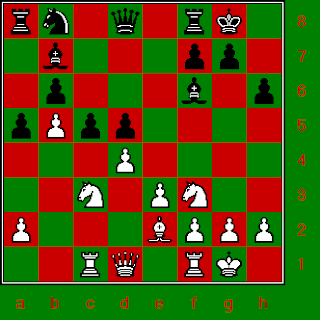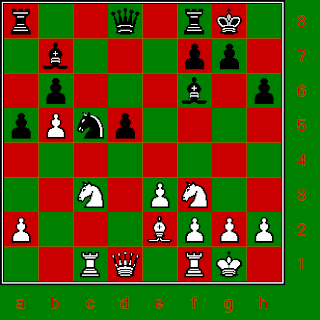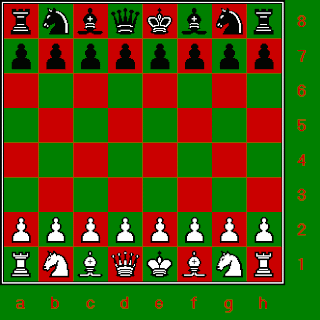1 d4 d5 2 c4 e6 3 Nc3 Nf6 4 Nf3 Be7 5 Bg5 0-0
6 e3 h6 7 Bh4 b6 8 Be2 Bb7 Line
1 d4 
1 ... d5
2 c4 
2 ... e6
2 ... c6
2 ... dxc4
2 ... Nc6
2 ... Bf5
2 ... e5
2 ... Nf6
2 ... c5
2 ... g6
2 ... Bg4
2 ... Be6
3 Nc3
3 Nf3
3 g3
3 cxd5
3 e3
3 Qc2
3 Bf4
3 ... Nf6
3 ... c6
3 ... Be7
3 ... c5
3 ... Bb4
3 ... f5
3 ... dxc4
3 ... a6
3 ... Nc6
3 ... b6
3 ... Ne7
3 ... g6
4 Nf3 
4 cxd5
4 Bg5
4 Bf4
4 e3
4 g3
4 f3
4 a3
4 ... Be7
4 ... c6
4 ... Bb4
4 ... Nbd7
4 ... dxc4
4 ... c5
4 ... a6
4 ... Nc6
4 ... b6
4 ... h6
4 ... Ne4
5 Bg5
5 Bf4
5 Qc2
5 cxd5
5 g3
5 e3
5 a3
5 Qd2
5 ... O-O
5 ... h6
5 ... Nbd7
5 ... c6
5 ... Ne4
5 ... dxc4
5 ... Nc6
5 ... c5
5 ... b6
5 ... a6
6 e3
6 Qc2
6 Rc1
6 cxd5
6 Qb3
6 c5
6 ... h6
6 ... Nbd7
6 ... b6
6 ... c6
6 ... Ne4
6 ... a6
6 ... dxc4
6 ... c5
7 Bh4 
7 Bxf6
7 Bf4
7 cxd5
7 ... b6
7 ... Ne4
7 ... Nbd7
7 ... c6
7 ... c5
8 Be2
8 Bd3 Bb7 9 O-O Nbd7 10 Qe2.
8 Rc1 Bb7.
8 cxd5 Nxd5 9 Bxe7 Qxe7.
8 Qb3 Bb7 9 Bxf6 Bxf6 10 cxd5 exd5.
8 Qc2 Bb7 9 Bxf6 Bxf6 10 cxd5 exd5.
8 Bxf6 Bxf6 9 cxd5 exd5.
8 Rb1.
8 a4 c5 9 cxd5 exd5 10 Be2 Be6 11 O-O Nc6 12 Ne5 Nb4
13 Na2 Nxa2 14 Rxa2 Qc7.
8 Qd2.
8 ... Bb7
8 ... Nbd7
8 ... dxc4
8 ... c5
9 Bxf6
9 Rc1
9 O-O Nbd7 10 Rc1 c5.
9 cxd5 Nxd5 10 Bxe7 Qxe7 11 Rc1 Rc8 12 O-O.
9 ... Bxf6
9 ... gxf6
10 cxd5 
10 O-O
10 Qb3
10 ... exd5
10 ... Bxd5 11 Nxd5 exd5 12 O-O.
11 b4
11 0-0
11 Qb3
11 Rc1
11 ...c6
11 ... a6
11 ... c5 12 bxc5 bxc5 13 Rb1.
11 ... Nd7 12 O-O.
11 ... Re8 12 O-O c6 13 Qb3.
11 ... Qe7 12 Qb3.
12 O-O
12 Rc1
12 Qb3
12 Rb1
12 ... a5
12 ... Re8 13 Qb3.
12 ... Qd6 13 Qb3.
12 ... Nd7 13 Qb3.
12 ... Qe7 13 Qb3 Rd8.
13 b5
13 bxa5
13 a3
13 ... c5
13 ... Re8
14 Rc1
14 Ne5
14 Re1
14 ... Nd7
14 ... Re8
15 dxc5
15 Qd2
15 Qc2
15 Bd3
15 Re1
15 ... Nxc5
15 ... bxc5
16 Nd4
16 Qd2
16 Re1
16 Na4
16 ... Qd6
16 ... Be5
16 ... Rc8 17 Bg4 Rc7.
17 Bg4
17 Nf5
17 Bf3
17 ... Rfd8
17 ... Rad8
18 Re1
18 Na4
18 Qf3
18 ... Ne6
18 ... a4
18 ... Be5
19 Bxe6
19 Nce2
19 ... fxe6
20 Nc6
20 Qg4
20 ... Bxc6
20 ... Bxc3
21 bxc6
21 ... Qxc6
21 ... Bxc3
By JimGyro@yahoo.com
Chess: Understanding the Queen's Gambit Declined (Tartakower Variation)
Chess: Symmetry of Mind

In order to better understand the game of chess one needs
to appreciate its symmetrical nature, or lack thereof.
Initially, each side controls equal space. White has the area contained by a1-a4, a4-h4, h4-h1, and h1-a1; Black has
a8-a5, a5-h5, h5-h8 plus h8-a8.
Furthermore, each side has 16 men, with each one facing a matching foe. White's a1 rook takes on a8, his b1 knight b8,
and so forth. The imbalance appears in White's first-move advantage; he gets to decide how the symmetry will be broken,
if at all it can be.
If both parties keep absolute territorial and material control,
the game ends in a draw, otherwise an asymmetry arises.
Oftentimes initiates believe checkmating the enemy king is the ultimate goal of chess. On a learned level, such is not the case.
The real aim is to push for an asymmetry that one then exploits
for victory.
Types Of Asymmetry
Minor Piece Superiority:
The advantageous placement of knights and bishops,
especially in enemy territory.
Pawn Structure Superiority:
The absence of isolated and double pawns plus other
pawn related weaknesses.
Territorial Possession:
The gain of space, particularly in enemy ground.
Material Advantage:
The ownership of more forces than the opposing army.
Developmental Lead:
A superior readiness for action in a particular area
of the board or throughout the arena.
Initial Advantage (Initiative):
* The luxury felt by White from having the first move
* The ability to dictate a game's pace
Chess: Symmetry of Mind
By JimGyro@yahoo.com